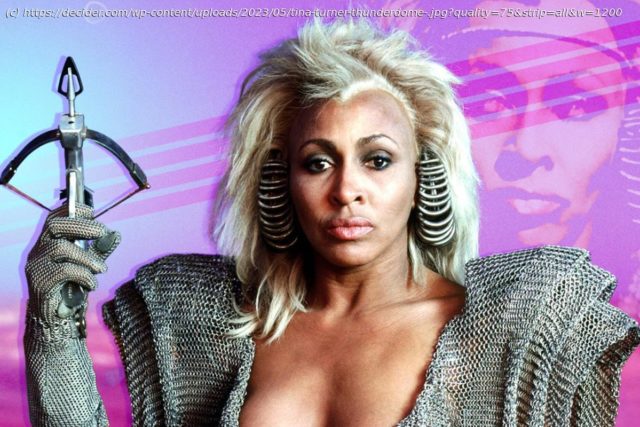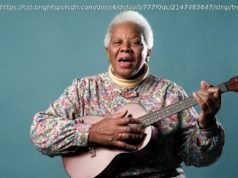„But he’s just a raggedy man?“
I could not presume to tell Tina Turner’s life better than she’s told it herself through a remarkable interview with People Magazine in 1981; a 1986 autobiography co-written with MTV’s Kurt Loder called I, Tina; through Brian Gibson’s well-regarded biopic What’s Love Got to Do With It? (1993) that credits Turner as co-writer; and most recently through Dan Lindsay and T.J. Martin’s exceptional, intimate, excruciatingly frank, documentary Tina (2021). She said often she didn’t love living in the past and that if she had it to do over again, she wouldn’t. There were good parts, but the bad parts outweighed them and remained, as bad things do, painful. But questions continued to pop up about her trauma and so she kept telling her trauma, over and over in nightmarish, forced repetition. She freed herself in an act of great courage on one fateful Fourth of July and thought she could start fresh — but she was never really free. When you become a spokesperson for survival, the things that tried to kill you are your constant, uninvited, unwelcome companions. Other peoples’ struggle and recovery become your responsibility and all that love doesn’t really feel like love when it’s burdened by desperation and hunger.
I was a kid in the mid-1980s when Tina Turner was a supernova and I didn’t know anything about the horrors she had survived. I only knew she was everywhere. Michael Jackson’s Thriller album was in constant rotation and then, a couple years later, so was Turner’s Private Dancer, thanks largely to that LP’s anthemic hits “What’s Love Got to Do With It?” and “Better Be Good to Me.” Her rolling, vaguely Caribbean cover of Al Green’s “Let’s Stay Together” was my introduction to the classic; her cover of David Bowie’s “1984” led me, after days of poring over the liner notes, to purchasing his Diamond Dogs album; and “Private Dancer” her “10 Cents a Dance” taxi-dancer song made me a lifelong Dire Straits fan. In the music video for “What’s Love Got to Do With It,” she’s wearing a fuck-you denim outfit, striding through the streets of New York on weaponized stilettos, fending off a gang of suitors after judging each of them not good enough. She didn’t fit the mold of beauty I had been fed by cultural expectation: instead of tall and lissome, she was compact and powerful; instead of blonde in her mid-twenties, she was Black in her mid-forties; instead of “like a virgin,” she was not like anything, she was a veteran of brutal and pernicious personal wars. She is the template for the megastardom of icons like Beyoncé (who recreated Turner’s “Proud Mary” choreography and performance for a Kennedy Center Honors tribute) and Serena Williams, and she rewired my preconceptions of my then 11-year-old self of what power and beauty could be in this country.
She began selling out arenas and I began buying up her amazing run of albums from previous decades. I was especially drawn to her live albums. Her energy leaps from the grooves like a thing made all of electricity and verve. She is galvanizing. I still can’t listen to her without moving my body. Watch her performing “I’ve Been Loving You Too Long” in the Maysles brothers’ Gimme Shelter for just a little taste of it. On stage, she reminds me of some impossible combination of James Brown and Joe Cocker, so packed to the seams with the urgency of glorious noise that she seems animated by it, by the force of the spirit leaving her body. The last generation had Marlene Dietrich’s legs as among the most talked-about stems in the world, we had Tina Turner’s. Her body is her instrument and instrumental to her art and it seemed like cathartic relief for her to sing it out. Holding so much genius inside her was a torment that flesh could contain for only so long. She was all potential energy, a ball of kinetic fire.
In the middle of her time at the top of the world, she was cast in the third Mad Max film (Mad Max Beyond Thunderdome) and I was there on opening day. It is still my favorite of the four films — not for the remarkable stunt work that ends it, but for the depth of its world-building and its ambiguous villain, Turner’s Auntie Entity. In the “beforetime,” Turner’s character was underestimated, overlooked; her skills underutilized until the “pocky-pocalypse” when all the things of man were laid waste by his cupidity. It’s not hard to imagine that if only the masters of the universe had recognized their insufficiency before “nobodies” like Tina Turner, that everything might have turned out better for the planet. In this new world, though, Auntie Entity is the Queen, self-made, beholden to no one. From the first seconds of Mad Max Beyond Thunderdome, the opening credits looming on a black screen, Turner’s propulsive, Grammy-winning “One of the Living” — one of two songs Turner recorded for the film — announce who the center of this film will be. I didn’t know at the time, but Turner attempted suicide multiple times during the bad old days. When she sings here about the living envying the dead, about not wanting to fight but being forced into conflict, and about walking “tall, cool, collected and savage/Walk tall, bruised, sensual, ravaged… ferocious and wild” – well, it always meant something to me but I confess, now that I’m the veteran myself of a lifetime of ugly and personal wars, arriving at roughly the same age as she was when she performed it, it means something different.
Mad Max Beyond Thunderdome is about the human tendency to make myths.






